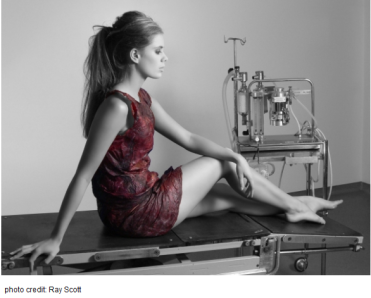The SKIN probe project examines the future integration of sensitive materials in the area of emotional sensing – the shift from ‘intelligent’ to ‘sensitive’ products and technologies.
As part of SKIN, we have developed a ‘Soft Technology’ outfit to identify the future for high tech materials and Electronic Textile Development in the area’s of skin and emotional sensing.
The dress show emotive technology and how the body and the near environment can use pattern and color change to interact and predict the emotional state.
Far-future design concepts
SKIN: Dresses is a Probe, a far-future design concept. It is not intended as a production prototype nor will it be sold as a Philips product. Like past Probe design concepts that have stimulated discussion around a range of issues, this concept is testing a possible future – not prescribing one.
A marvellously intricate wearable prototype Bubbelle is a dress surrounded by a delicate ‘bubble’ illuminated by patterns that changed dependent on skin contact.
Bubbelle was one of a series of dynamic garments developed by Philips Design as part of their on-going SKIN exploration research into the area known as emotional sensing. Nancy Tilbury was the Fashion Director of Probes, part of a pioneering interdisciplinary design team at Philips Design.



























